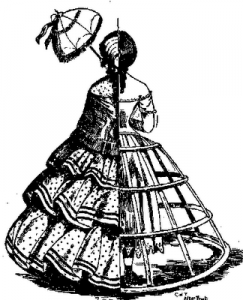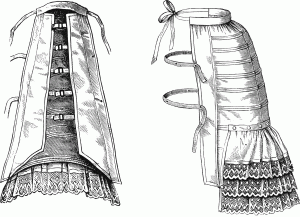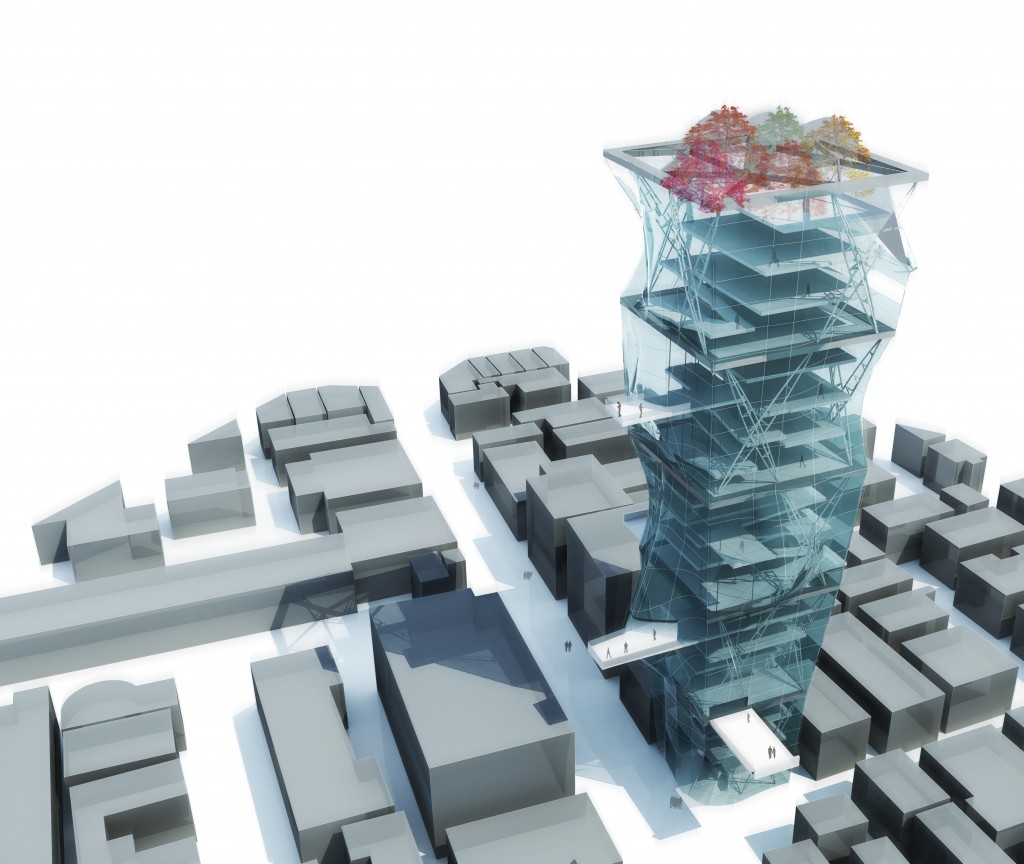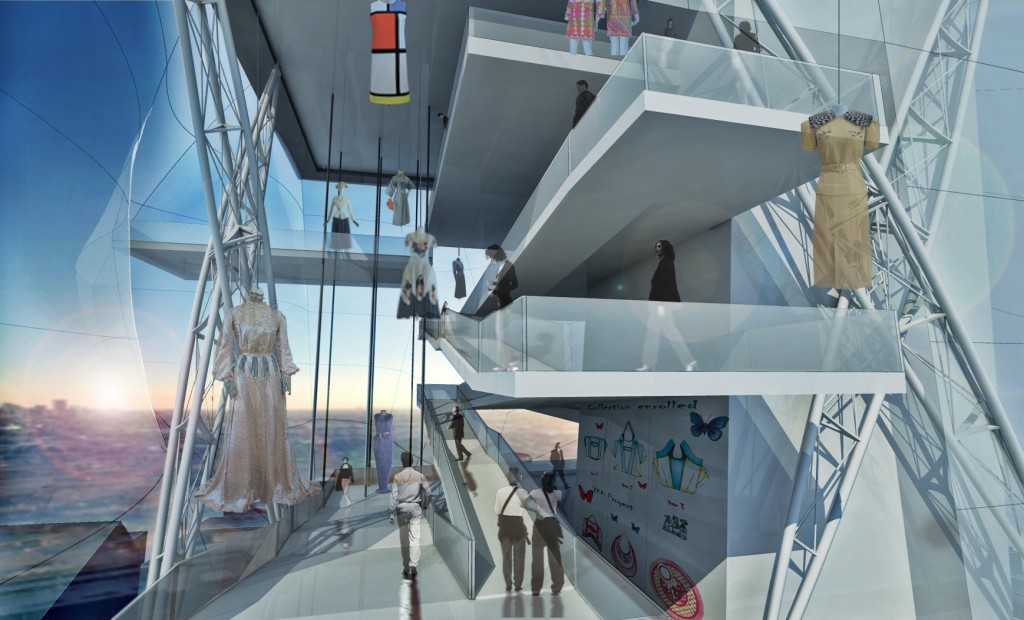Fashion Museum on Omotesando street – March 2010
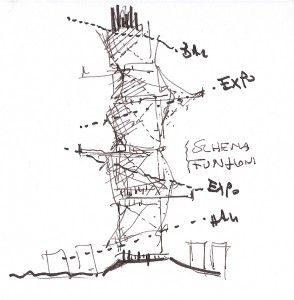
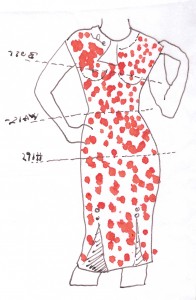

STRUCTURE / BODY – Self building pneumatic structure that is time effective and economically sustainable because the construction site can be very limited in size. It’s an automated construction technique that uses the structural elements of the tower itself to erect the structural elements.
The inspiration for this kind of structure comes form fashion, form the accessory designed to support the wearer’s skirts in the correct shape: the crinoline.
SKIN/DRESS – The building structure is then dressed up with a transparent skin made of ETFE membranes that fits the building following the cantilevered terraces and the runway.
GALLERY SPACE – The permanent exhibition space has a linear spatial organization until the 1950’s area, just like fashion was quite linear and the fashion designers were few and they dictated the main high couture trend. From the 1960’s exhibition area onwards, as in those years the lifestyles of women started multiplying and fashion became more dynamic, the gallery space starts becoming more dynamic. Suspended panels and hanging dresses allow the view form multiple angles and they draw inspiration form the trend reoccurrences in fashion (that begun in the ‘60s).
With: Laura Pedata, Gabriele Misso, Lamberto Nicoletti.
Colsuntants: Filippo Martinez.
Collaborators: Maria Luigia Micalella, Serena Carovillano.
| AWARDS: – |
| PROGRAM: Fashion museum |
| LOCATION: Tokyo (Japan) |
| DATE: March 2010 |
| CLIENT: ARQUITECTUM |
| BUDGET: – |
| AREA: 4.000 m2 |
| STATUS: – |
| FEATURED IN: – |
| RELATED LINKS: Europaconcorsi |
